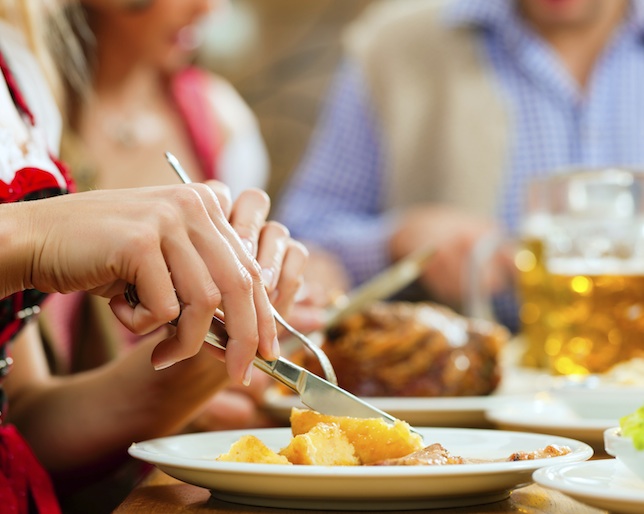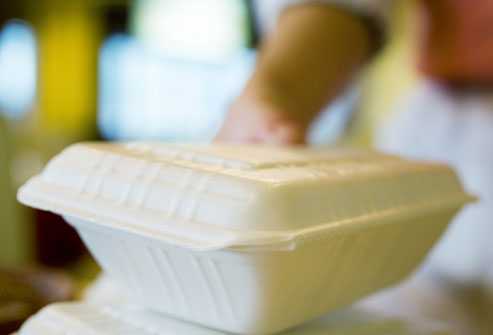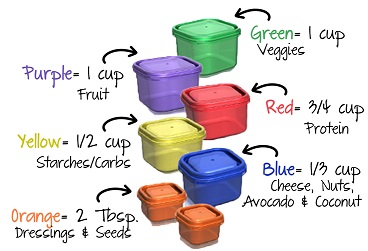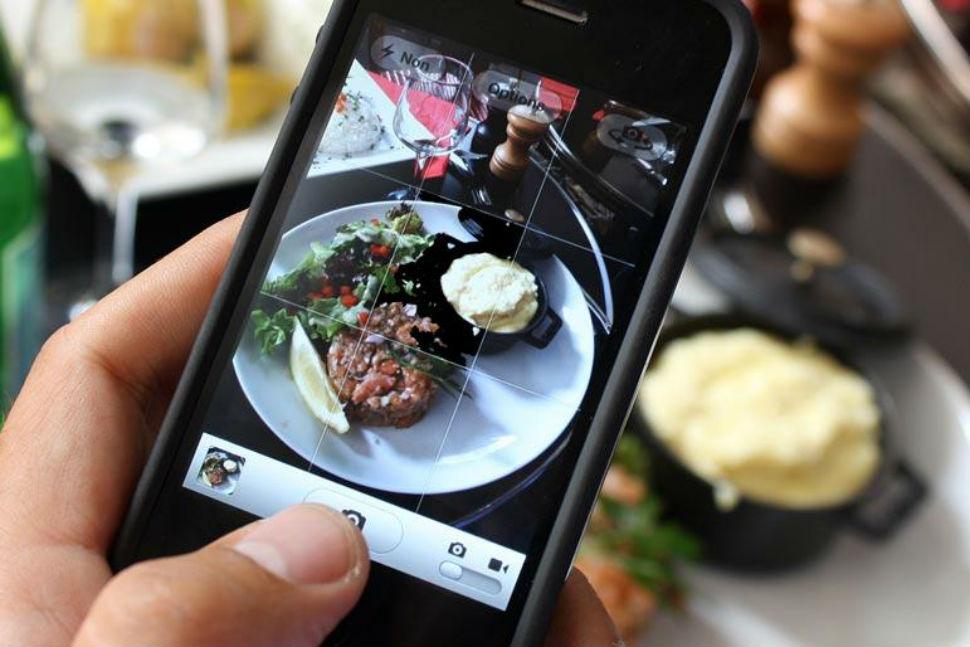7 Ways to Weigh Your Food / Figure out your Calories When Eating Out
 Recently, thanks to Obamacare, restaurants with 20+ locations are required to list calorie content information for standard menu items on menus. Total calories, fat, saturated fat, cholesterol, sodium, total carbohydrates, sugars, fiber and total protein have to be made available in writing upon request.
Recently, thanks to Obamacare, restaurants with 20+ locations are required to list calorie content information for standard menu items on menus. Total calories, fat, saturated fat, cholesterol, sodium, total carbohydrates, sugars, fiber and total protein have to be made available in writing upon request.
Unfortunately, most restaurants and cafe’s don’t fall into the 20+ locations category, and as such it can be very difficult to accurately guess what’s in the food you’re consuming when eating out. It would be easy if they had paper overwrapper, as they would need to mention all the info there.
That doesn’t mean all hope is lost though. Here are my tips on how to get a good idea of the nutritional value of food not prepared by you. Keep in mind that all these things can be done in tandem to get the most accurate estimate:
Step 1. Order the Most Unprocessed Food
Processed foods have the most variation when it comes to calories. That’s because added ingredients meant to give food a distinctive taste (creamier, richer, sweeter, crispier) can really add to the bottom line of the nutritional content.
That doesn’t mean that a restaurant can’t totally wipe out the lower calorie value of whole foods like vegetables by pouring on sauce or oil. However, you have a better chance of asking your whole food to be prepared (or not prepared) a certain way to cut back on those calories, while you have no such option of pre-packaged foods the restaurant chooses to purchase – like bread.
So, when dining out look for the most unprocessed, whole – closest to its natural state – foods on the menu. Look out for the way it is prepared and avoid anything deep fried, fried, or breaded and go for grilled, baked, roasted, or boiled.
In case you’re wondering how ordering the most unprocessed food will let you know how many calories you’re consuming – be patient my friend, we’ll get to it in the later step.
 Step 2. Always Section Off Half to Go
Step 2. Always Section Off Half to Go
The next thing you should do when ordering out is immediately upon getting your dish, divide your meal into two. If you are dealing with a solid type of food (like salmon or other white fish, it’s easy to cut and stack one piece on top of the other to visually make sure you have half).
Oftentimes, chefs will have already cut your food in halves or quarters for presentation sake, so just make sure each size is approximately the same when halving and/or count half the pieces of your food to put aside.
This is where the unprocessed food selection comes in handy. Later on when you get home, weigh those pieces on your food scale and then you can get an accurate idea of how many ounces or pounds of food you ate at the restaurant.
When you look up the nutritional value of cooked eggplant or steamed cabbage (make sure you use cooked, preferably how the item was prepared, as opposed to raw values) you will get a much closer value of the calories compared to weighing a highly processed food that could have been made up of god knows what.
Alternatively, if you are just consuming small bites like hors d’oeuvres instead of a full meal, be sure to take home one or two samples (two because it it accounts for variation in weight and gives you an average) in a napkin or paper plate so you can weigh the contents later and multiply it by the amount you had (this means you need to take note of how many you have)
I recommend always capping your intake of hors d’oeuvres to two of one item. Also, you want to be picky about what you eat so that you are not forced to be carrying home a napkin that more resembles a stork’s package.
Alternatively, if you are just getting bites and not a meal, be sure to take home one or two samples so you can weigh the contents later.
Step 3. Buy Two!
In the same vein as the step above – in cases where you’re really hungry or the dish is really small and you don’t want to save half of your food – buy two! One to stay and one to go.
I would recommend ordering both meals at the same time (as one order) for the following reasons: You get a higher likelihood of the food being prepared by the same person and dished out at the same time. This increases the likelihood that the portions will be the same, but you can also eye ball the food in your to-go container to make sure.
 Step 4. Convert your food into a Cup or Bring your own Portion Container
Step 4. Convert your food into a Cup or Bring your own Portion Container
This is actually a great dieting secret of a famous K-pop group, Nine Muses. She would famously only eat what she could fit into it three paper sized cups.
You can take a cue from this group when eating out by either bringing a paper cup and stacking your food into it or asking the cafe/restaurant for a ramekin or two and portioning out your food that way. (Most restaurants will have 6 ounce ramekins but to be sure you can get your own set for your home and measure it with your fingers to get an idea of whatever size the restaurant gives you.)
You can also bring your own portioned container and transfer your food over before digging in.
I should note that you don’t only have to eat one cup (although a cup of non processed food should be pretty filling), but at least you can then measure what you’ve eaten – whether that be one or two cups when everything is said and done.
The trick to doing this though is only putting one food in the cup and not mixing a bunch of food. That’s because each food has a different volume and calorie content and you would be no better off knowing you ate a cup of food where one item was 70 calories an ounce and another was 10 calories an ounce. No, average out everything wouldn’t work either.
If you want to get creative though, you could delineate a line in the cup showing where half a cup or 4 quarter cups would be and putting each food to the line of demarcation. For example, filling half the cup with carrots, quarter of the cup with beans and another quarter with corn, for example.
Then, all you’d need to do is take note of this on your phone or a piece of paper to look up and log when you get home.
Thanks to instagram, Facebook and twitter, it is no longer considered all that weird to take pictures of your food before eating it, so if you’re running low on writing utensils or feel weird about stopping to make note of what you’re eating, go ahead and take a picture for your future frame of reference when researching and logging the calories later.
* If you can see the person preparing your food, take a picture/video or mental picture of how many pieces/handfuls of ingredients they are using to make your food. A handful versus three tablespoons, one ladle versus a cup.
Step 6. Don’t be afraid to Ask
Don’t be afraid to ask if your food can be prepared another way – can the chicken be grilled instead of roasted? Can the panko bread crumbs and cheese be left out?
Just ask how many calories are in the base item the company is using: Can you see the nutritional information for the specific cheese, wrap or bread they are using? If they won’t let you see it for fear of revealing their supplier just ask them to look at the package and relay the number to you.
Ask what ingredients are in an item to eek out any hidden high calorie stuff that you can decide to avoid altogether since you know it’ll crank up the calorie content of your dish.
I’ve done all of the above in the past and have mostly never had a problem with a worker looking at the package to tell me the calories, reveal ingredients or prepare food in a different way.
I mean, honestly – if all you need to be assured of is the calories to make a purchase, most people will oblige (I concede this mainly works best in cafe’s as opposed to big chain restaurants, but it doesn’t hurt to try either way).
Another option is to call or e-mail (facebook, tweet, etc.) the company after the fact to see if you can find out the nutritional value of a more processed item for more accurate logging. If you discover the calories were way higher than you thought they would be, don’t fret – at least you now know and can compensate by cutting back a little bit the next day as opposed to ignorantly being at a calorie surplus because you never asked/inquired.
Step 7. Bring a food scale around in your car
This is kind of like a bonus step, because if you don’t have a car it probably won’t work and if you’re eating out with company the above steps are better bets. If you do have a car or intend on eating alone though and just don’t feel like cooking, you can still order out, then measure and note your meal in the car before chowing down.
The fastest way to measure is to tare out the entire container, then lift each food item (all the chicken or all the brussels sprouts out). Make note of the negative grams/ounces and that’s how much of that food you have in your plate.
Even if you don’t end up consuming everything, you will have the base numbers from which to work with. For example, if your base number was 8 ounces of brussels sprouts and you have left overs that weight 2 ounces, you can log 6 ounces of brussels sprouts into your tracking program/food diary.
My final tip is to always round up when you are crunching the numbers later on at home because restaurant chefs are notorious for adding in hidden ingredients to try and enhance taste. This means higher calories!
So, there you have it!
Seven ways you can still eat out and get an accurate assessment of how many calories you are consuming. Again, you probably won’t be 100% accurate when you are not making food for yourself as you won’t be able to gauge exactly what is going into your food, but you can get a much better idea and cut back when necessary so as to remain in your calorie deficit or desired intake for the day.
If you have any tips for measuring or weighing your food when eating out be sure to leave it below in the comments section 🙂
